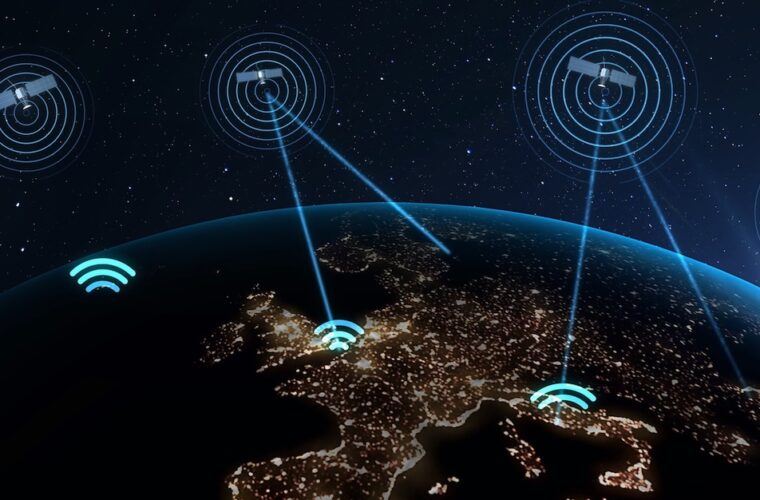Starlink Antenna and Satellites: an in-depth review of ambitions and challenges
SpaceX has recently taken a significant step forward by unveiling a state-of-the-art Starlink antenna for residential use, demonstrating a fusion of its advanced technology and strategic market expansion. This event coincided with the successful deployment of two satellites, marking a major milestone for the company renowned for its space exploration and global connectivity goals. Yet, as Bloomberg reports, this progress is set against the backdrop of challenges in its Starship program and speculation of a stock market debut in 2024. This juxtaposition paints a picture of a company at the pinnacle of space technology, simultaneously navigating considerable obstacles.
The new Starlink antenna’s edge
The latest Starlink antenna, a successor to the whimsically named ‘Dishy McFlatface,’ marks a substantial improvement with enhanced performance, simplified installation, and greater resilience to environmental factors, including a notable IP67 water resistance rating. While its impressive capabilities stand out, the antenna’s set price of $599 prompts questions about SpaceX’s pricing model, particularly considering potential cost savings from eliminating complex robotics in production.

The redesign of the fragile Starlink cable is also significant. The introduction of the “Gen 3” router, equipped with Wi-Fi 6 and dual Ethernet ports, indicates progress. Yet, SpaceX is still silent on the pricing and availability of this future access point.
Strategic satellite deployment: ethical and market implications
SpaceX’s deployment of 45 new V2 satellites reflects its commitment to expanding global broadband coverage and achieving market leadership in satellite internet. However, this rapid expansion brings forth ethical and strategic considerations. The ambitious goal to launch up to 42,000 satellites cements SpaceX’s market position and raises concerns about space traffic and the sustainability of such an extensive satellite network. Space debris’s associated risk and potential impact on other space missions and satellites is a pressing concern.
SpaceX’s efforts to bring high-speed internet services almost everywhere are dedicated to universal internet access. Elon Musk’s avant-garde venture has already initiated its march across Nigeria, Kenya, South Africa, Mauritius and Benin, demonstrating the technology’s viability on the African continent. As soon as from 2024, countries like the Democratic Republic of Congo, Tanzania, Zimbabwe, Seychelles and later Cameroon, Botswana, and Namibia are slated to be interlinked through the tapestry of Starlink’s satellite network.
While this initiative can potentially reduce digital divides, it raises ethical dilemmas. SpaceX’s expansion must cater to profitable markets and regions in dire need of connectivity, striking a balance between commercial goals and social responsibility to avoid deepening digital disparities.
IPO considerations and ethical challenges
As SpaceX considers an IPO for its Starlink division, it faces the dual task of aligning with market expectations and staying true to its innovation and global connectivity vision. A stock market entry could boost SpaceX’s financial resources, facilitating a broader and quicker rollout of its services. However, this move also entails the risk of favouring short-term economic gains over long-term innovation and ethical responsibilities.
The focus of investors on profitability could clash with SpaceX’s goal of providing fair internet access worldwide, particularly in less lucrative or challenging regions. It’s crucial for the company to carefully navigate this landscape, ensuring that its financial pursuits uphold its commitment to digital inclusivity. Balancing financial objectives with ethical responsibilities is critical to maintaining public and investor confidence and crucial in shaping the future of global telecommunications in an innovative and responsible manner.
SpaceX’s strategy in satellite deployment and its potential IPO offer remarkable opportunities for advancements in global connectivity. These endeavours are accompanied by significant responsibilities: managing the risks associated with space congestion, ensuring equitable access to technology, and balancing commercial success with ethical obligations. The manner in which SpaceX addresses these challenges will be critical in determining its role in the ever-evolving domain of global telecommunications and space exploration.



